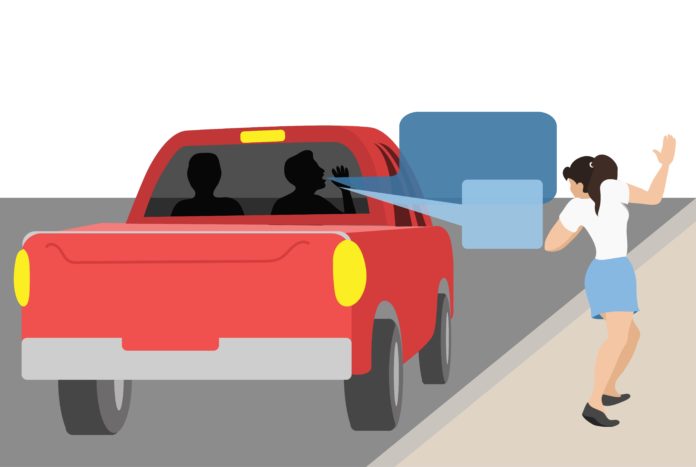From wolf whistles to cat calls, some men seem unable to recognize that verbal sexual harassment is never welcome. In a 2018 study on sexual harassment and assault, commissioned by the Stop Street Harassment organization, 65 percent of those surveyed reported experiencing street harassment in the form of “someone whistling, honking, making kissy noises, ‘Pssst’ sounds, or leering/staring aggressively.” Furthermore, 66 percent of women reported experiencing some kind of sexual harassment in a public space.
We all have a role to play in ending verbal sexual harassment. This kind of behavior is part of a larger social phenomenon that accepts the idea that “boys will be boys.” When we witness sexual harassment, we cannot afford to act as passive bystanders, as that reinforces the belief that violence against women will continue to be ignored. Be aware of your surroundings. If you witness any form of sexual harassment, do something about it.
In college, sexual harassment can take many forms. There are four women on the Lariat editorial board. Each of us has experienced some form of sexual harassment while at Baylor, often from strangers but sometimes from acquaintances. Most of the women on the editorial board identified “frat lapping” as the most common form of sexual harassment on campus. There are a few distinct definitions of “frat lap” at different universities, but at Baylor, most women define this as male students driving around campus in a truck, hollering at women on the sidewalk and often banging on the side of the vehicle as if to say, “Get in, baby.”
Verbal sexual harassment is perceived by some as being innocent or even as a form of flattery. But the reality for most women is that cat calling and other sexual comments make women feel unsafe. Groups of men calling out to women walking alone or in small groups remind women of the power dynamic at play in rape culture. The problem with verbal sexual harassment is obvious: Women deserve to feel safe in public spaces.
Feminist activists in the 1960s and ‘70s organized “Ogle-Ins” in which women gathered on a street corner to give men a taste of their own medicine by implementing common verbal sexual harassment tactics on the very men that used them. Although this strategy brought the issue of street harassment into public discourse for the first time, there are less flashy and more effective methods of combating cat callers.
It’s important to recognize the existence and prevalence of street harassment. Start a dialogue with your friends, men and women, about the realities of street harassment. If you’ve ever been the victim of verbal sexual harassment, think about how you wished bystanders would have responded to your situation and encourage your friends to intercede in the future. If you haven’t experienced this behavior firsthand, ask your friends about their experiences to see how they suggest a bystander should take action.
If you see a woman or group of women getting sexually harassed, don’t just watch the events unfold — do something about it. Even though you weren’t the one who perpetrated the harassment, you perpetuate it by not interfering in some way. The most direct approach is to chastise the cat callers. Tell them that what they’re doing is not cool and certainly not acceptable behavior. The women being objectified may not feel safe enough to respond, as most women have learned to simply ignore the harassers for fear of the situation escalating. Bystanders could play an important role by telling the perpetrators that what they’re doing is unacceptable and objectifies women. Another strategy could be to go up to the women after the event and reassure them that they are safe in that space.
Sexual harassment isn’t going to go away if we keep putting our heads down and pretending like we don’t hear the catcalls.






